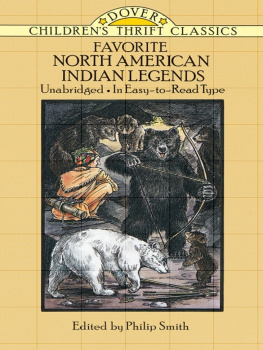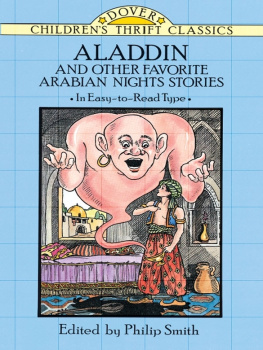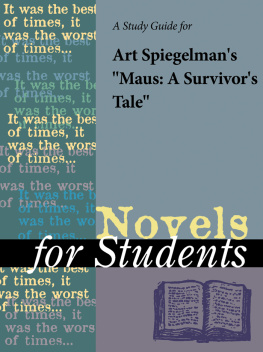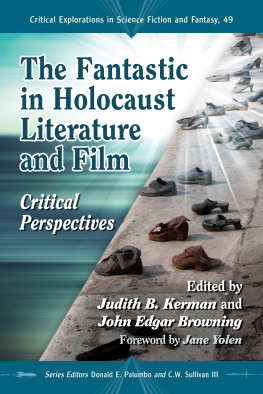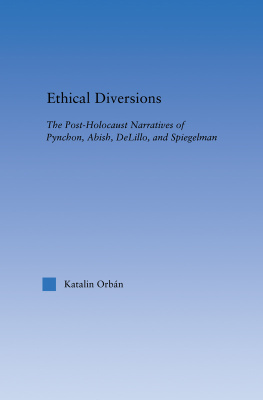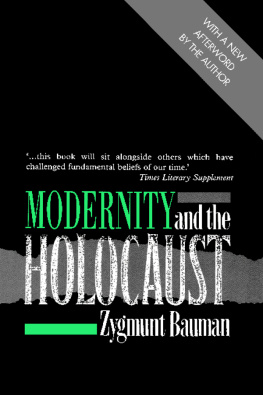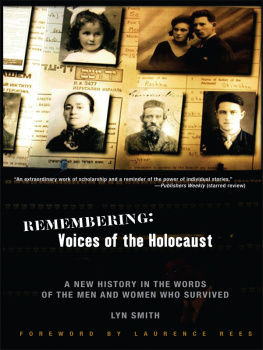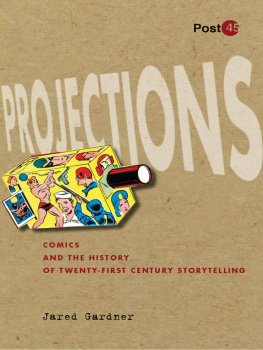Reading Art Spiegelman
The work of Art Spiegelman is one of the great sources of academic and literary legitimacy for the study of comics/graphic novels. Philip Smiths book not only thoroughly documents this contribution but it brilliantly analyses its roots in underground comics (Breakdowns), the evolution of his masterwork Maus, and the continued development of the artist into In the Shadow of No Towers. This is a volume that every scholar of comics/graphic novels will want to add to her library.
Daniel J. ORourke, Ashland University, USA
Smith makes an important contribution to comics writing with this work. Historys recent horrors are easily understood in terms of pure barbarism, yet such an explanation is unsatisfying. Inhumanity towards others often cloaks itself in the veneer of rationality. Smith makes a compelling case that Spiegelmans work strips away that veneer by making us confront the madness of our complicity.
Bond Benton, SUNY Fredonia, USA
The central thesis of this book is that Art Spiegelmans comics all identify deeply rooted madness in post-Enlightenment society. Spiegelman maintains, in other words, that the Holocaust was not an aberration but an inevitable consequence of modernisation. In service of this argument, Smith offers a reading of Spiegelmans comics, with a particular focus on his three main collections: Breakdowns (1977 and 2008), Maus (1980 and 1991), and In the Shadow of No Towers (2004). He draws upon a taxonomy of terms from comic book scholarship, attempts to theorize madness (including literary portrayals of trauma), and critical works on Holocaust literature.
Philip Smith obtained his Ph.D from Loughborough University, U.K. in 2014. His work has been published in Journal of Graphic Novels and Comics, Literature Compass, Journal of Southeast Asian Studies, International Journal of Comics Art, Journal of European Studies, Asian Theatre Journal, Comics Forum, Slayage, and Journal of Popular Culture. He blogs for The Hooded Utilitarian.
Routledge Advances in Comics Studies
Edited by Randy Duncan, Henderson State University Matthew J. Smith, Wittenburg University
1 Reading Art Spiegelman
Philip Smith
First published 2016
by Routledge
711 Third Avenue, New York, NY 10017
and by Routledge
2 Park Square, Milton Park, Abingdon, Oxon OX14 4RN
Routledge is an imprint of the Taylor & Francis Group, an informa business
2016 Taylor & Francis
The right of Philip Smith to be identified as author of this work has been asserted by him in accordance with sections 77 and 78 of the Copyright, Designs and Patents Act 1988.
All rights reserved. No part of this book may be reprinted or reproduced or utilised in any form or by any electronic, mechanical, or other means, now known or hereafter invented, including photocopying and recording, or in any information storage or retrieval system, without permission in writing from the publishers.
Trademark notice: Product or corporate names may be trademarks or registered trademarks, and are used only for identification and explanation without intent to infringe.
Library of Congress Cataloging-in-Publication Data
Smith, Philip, 1983
Reading Art Spiegelman / by Philip Smith.
pages cm. (Routledge advances in comics studies; 1)
Includes bibliographical references and index.
1. Spiegelman, ArtCriticism and interpretation. I. Title.
PN6727.S6Z83 2016
741.5973dc23 2015034701
ISBN: 978-1-138-95676-6 (hbk)
ISBN: 978-1-315-66554-2 (ebk)
Typeset in Sabon
by codeMantra
[The Holocaust was a] watershed of human history, the death-knell of the Enlightenment, the proof that Western Civilization didnt work. Its like the old Looney Tunes cartoons where the character runs past the edge of a cliff and keeps running through midair. It takes a while to notice there is no ground left to run on [] Western Civilization ended at Auschwitz. And we still havent noticed.
(Art Spiegelman 1999, 15)
One day you will speak of all this, but your story will fall on deaf ears [] You will possess the truth, but it will be the truth of a madman.
(Anonymous S.S. officer to a Jewish prisoner in Elie Wiesel 1989)
Figures
Tables
The single author is a myth that does not stand up well to scrutiny. My name adorns the cover of this book, but countless people have shaped its construction in the six years between my enrolling in a Ph.D. program and writing these words. I list here just a few of them.
Thanks go to my parents and step-parents who not only raised me and funded my education but, when I quite irresponsibly quit my job so that I could study full time during the last six months of my Ph.D. program, offered me the food, shelter, and kindness I needed to do so.
My wife, Stephanie, has been a proof-reader, editor, and, more importantly, unfailing source of sympathy and joy throughout this project.
Drs. James Lyons, Andrew Selby, and Andrew Dix, as well as two anonymous peer reviewers all offered extremely valuable advice in improving this work.
I would like to thank both Drs. Robert N. Kraft and Caroline Scott, both of whom have shown a truly humbling degree of generosity and patience when answering my many questions.
Drs. Randy Duncan and Matthew Smith were pivotal in bringing this book into existence. My contacts at Routledge, Felisa Salvago-Keyes and Andrew Weckenmann, were incredibly responsive, personable, and efficient.
Thanks also go to my friends, Zhe, Jon, Alex, Andy, Darren, Sam, Toby, Bjorn, Von and Yonina, Poppy, Charlie, and of course Penelope.
Most importantly of all, Dr. Brian Jarvis has poured over as many drafts of this work as I have. As my Ph.D. supervisor, he was tireless, patient, thorough, and eternally good-humoured. Brian taught me since I was an undergraduate (in my teens no less!) and now, after almost 15 years, I am terrified by the prospect of no longer having any drafts to email him.
Comics are currently enjoying an increase in cultural recognition Spiegelman has been a key figure in enhancing the cultural capital and intellectual respectability of the alternative comics genre The centrepiece of this book is that Spiegelmans art dramatizes and explores the insanity of post-Enlightenment rationality.
As a cultural form, comics have come a long way in the last half century. At the time of writing, alternative comic books, whilst not rivalling prose or film in terms of sales or critical recognition, have reached audiences in ways that would have seemed inconceivable 60 years ago. Comic books in North America have gone from being a marginalised and even outlawed medium in the 1950s and 1960s to, in certain cases, a widely recognised and celebrated artistic form. A few instances from the past decade can illustrate the genres prodigious rise and current esteem. In 2006, Gene Luen Yangs American Born Chinese (2006) was the first comic ever to be shortlisted for a National Book Award. Marjane Satrapi was nominated for an Oscar in 2008 for the film adaptation of her comic book Persepolis (2000). In 2009, the New York Times launched two categories for graphic books on their bestseller list (hardback and paperback) alongside a separate category for Japanese manga. The work of Chris Ware now regularly appears alongside traditional gag cartoons in The New Yorker, and in 2012 the Modern Art Museum in Paris exhibited a collection of work by the outlaw cartoonist Robert Crumb.



